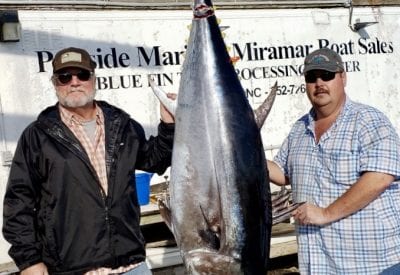
By Capt. Craig Price
Ever fished with someone who spends as much time fiddling in their tackle box and tying on different lures as they actually spend fishing? Then at the end of the trip this angler wonders why his/her production is lower than those who’ve been persistently casting away? I’ve seen this behavior many times, and I’ve been guilty of it too.
Sometimes this conduct is driven by warranted experimentation, or adjustments required by changing conditions. No doubt the ability to adapt to changes is a vital angling skill. But often the constant tinkering is a result of uncertainty and lack of preparation.
Better production can also simply be a matter of numbers, i.e. one angler makes 50% more casts therefore he/she catches more fish. I know that over the years I’ve learned that I don’t catch many fish when I don’t have a line in the water.
But often better it’s preparation and confidence that makes the more successful angler.
Preparation and practice develop confidence, and confidence promotes success. It’s a premise that we can apply to fishing, or business or even academic pursuits.
While mulling over the impact of confidence on fishing results, I ran across an article by renowned angler Mark Sosin titled The Key Ingredient. Sosin’s piece crystallizes my thoughts: “Confidence should control what you tie on your line. If you believe it will work, it probably will.” He goes on to say that confidence is critical because it allows the angler to focus on presentation. Presentation refers to placing the lure in exact locations and making the bait resemble the predator’s natural prey as closely as possible.
My observations confirm that the majority of anglers don’t understand how important proper presentation is. Again Sosin beats me to the punch – “This is a mental game. Every cast should count.”
This statement alone reveals the #1 reason top anglers are better than their peers. They are making every cast count by being precise with their presentation, and making subtle adjustments of speed, depth, and direction when needed.
I think the latter part of Sosin’s observation is just as critical – “make the bait resemble the predator’s natural prey.” Many lures have great built-in swimming actions, but the more adept an angler becomes at varying the inherent action to make the lure resemble a weak, injured, or fleeing bait, the more success he/she will have drawing strikes.
Maybe the abundance of tv shows and internet videos are partially to blame for many casual anglers’ mistaken idea of how easy it is to catch fish with artificial lures. The videos show brief periods of successful catches, but they don’t accurately portray the countless hours of preparation and application it takes be a consistently good angler.
Luckily, more preparation and practice time is a blessing not a chore to those of us who love fishing. No one has to drag me out of the house to get on a boat, or even to spend time maintaining tackle or tuning lures. I’ve learned the more time and effort I invest in these activities, the more Fish On! I experience on the water.
